Our eyes enable us to see and discern the astonishing world around us. They are also fragile parts of a complex human body, susceptible to disease, trauma, infection, malnutrition, and the simple aging process.
Many serious eye diseases do not have early symptoms. Even if you do not wear corrective lenses to aid in vision, an annual eye exam can help ensure the health of your eyes and the quality of your vision.
What To Expect At Your Eye Exam
A pediatric and/or an adult eye and vision examination may include but is not limited to, the following:
Patient History
The physician, optometrist, or assistant will ask about any eye or vision problems you may have and about your overall health. In addition, a patient history will include when your eye or vision symptoms began, medications you are taking, and any work-related or environmental conditions that may be affecting your vision. The doctor will also ask about any previous eye or health conditions you and your family members have experienced.
Visual Acuity
Visual acuity measurements evaluate how each eye is seeing. Reading charts are often used to measure visual acuity. As part of the testing, you will read letters on charts at a distance and near.
-
Fun Fact: The results of visual acuity testing are written as a fraction, such as 20/40. The top number in the fraction is the standard distance at which testing is done (20 feet). The bottom number is the smallest letter size you were able to read. A person with 20/40 visual acuity would have to get within 20 feet to see a letter that should be seen clearly at 40 feet. Normal distance visual acuity is 20/20.
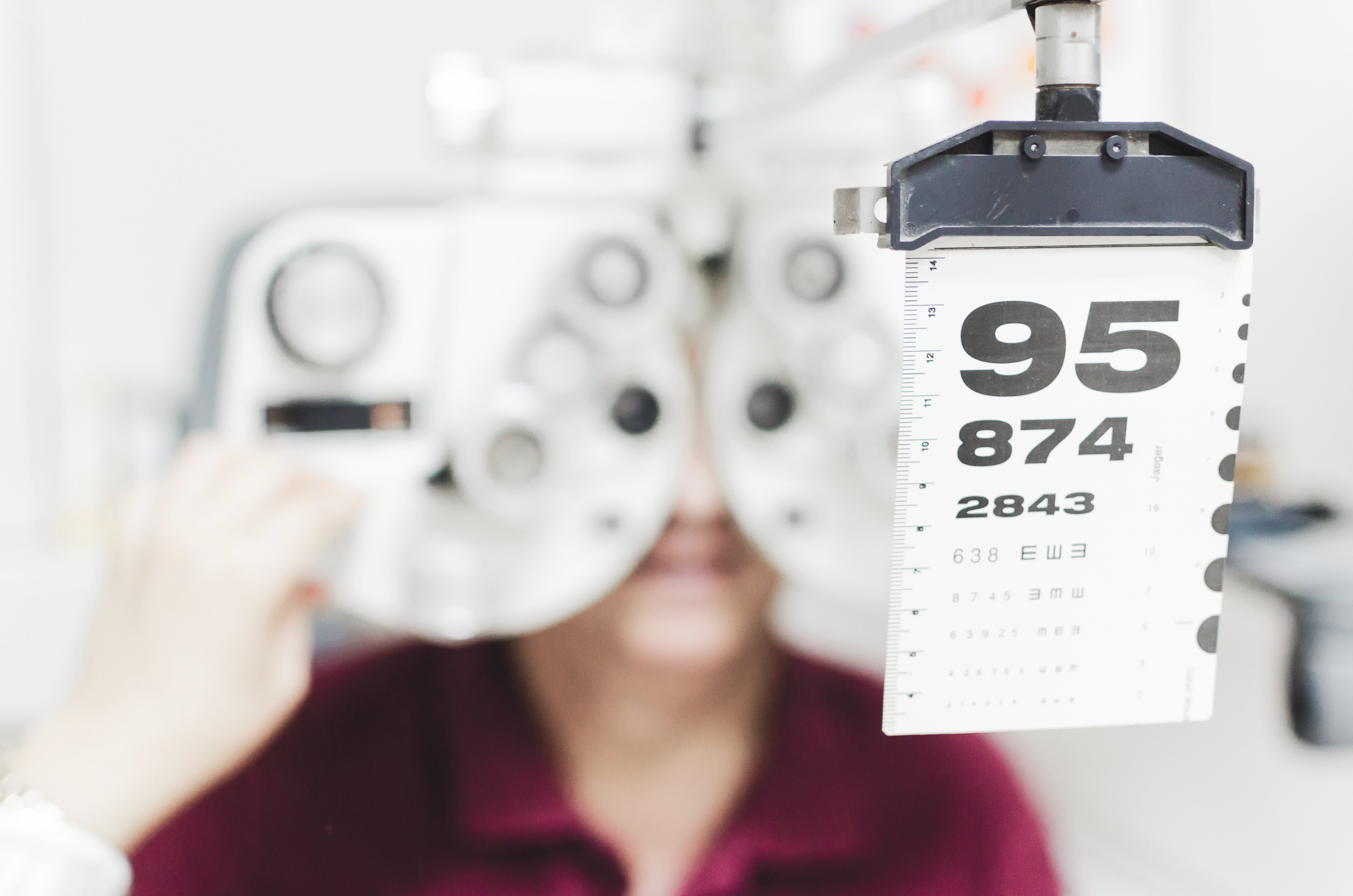
Preliminary Tests
Our physicians or optometrists may first want to look at specific aspects of the patient's visual function and eye health. Preliminary tests can include evaluations of depth perception, color vision, eye muscle movements, peripheral or side vision, and the way your pupils respond to light.

Keratometry/Topography
These tests measure the curvature of the cornea (the clear outer surface of the eye) by focusing a circle of light on the cornea and measuring its reflection. This measurement is particularly critical in determining the proper fit for contact lenses.
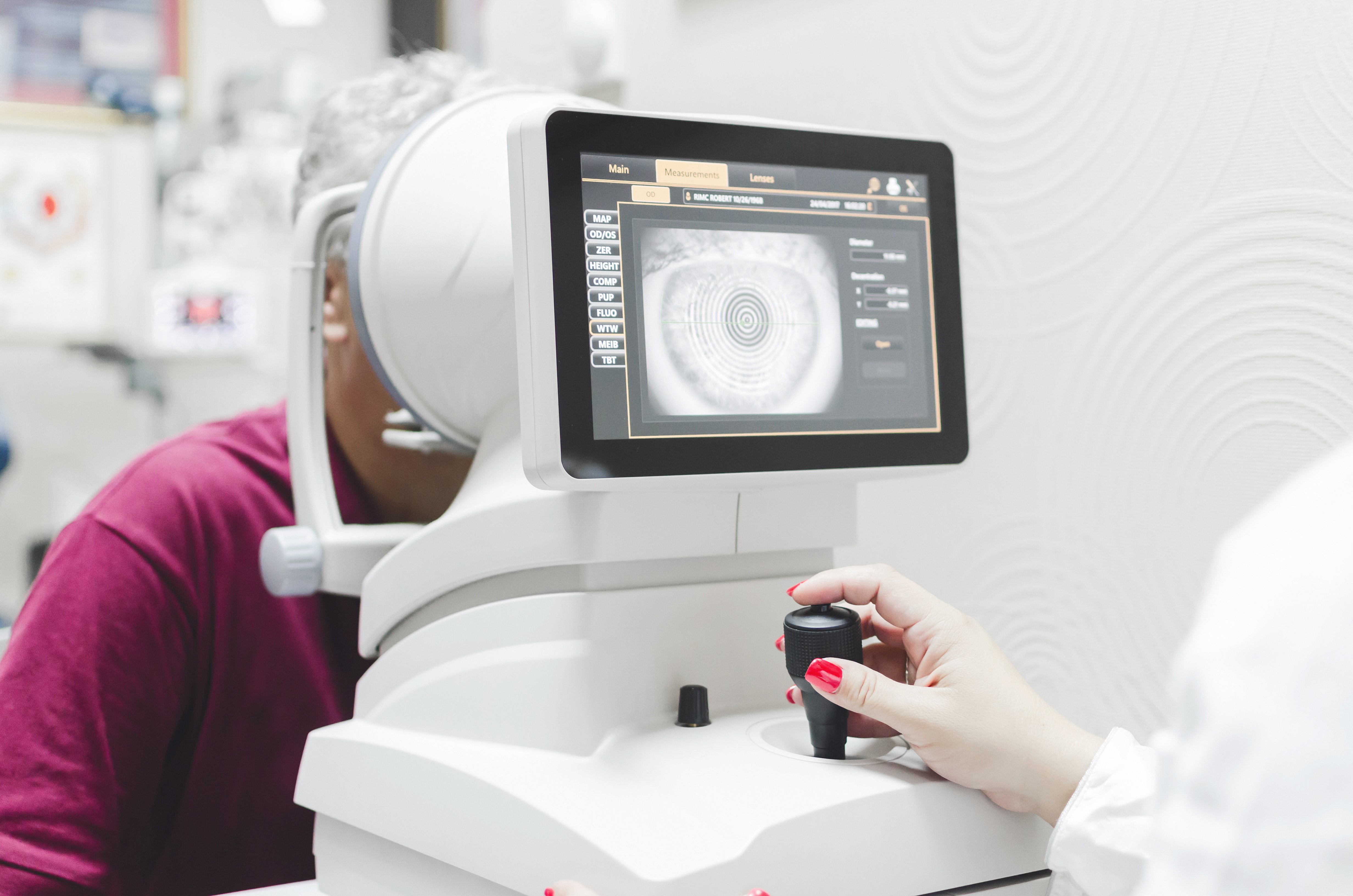
Refraction
Refraction determines the lens power needed to compensate for any refractive error (nearsightedness, farsightedness, or astigmatism). Using a phoropter instrument, the doctor places a series of lenses in front of your eyes. The lens power is then refined based on the patient's input on the lenses that give you the clearest vision. “Better one or better two” and so on.
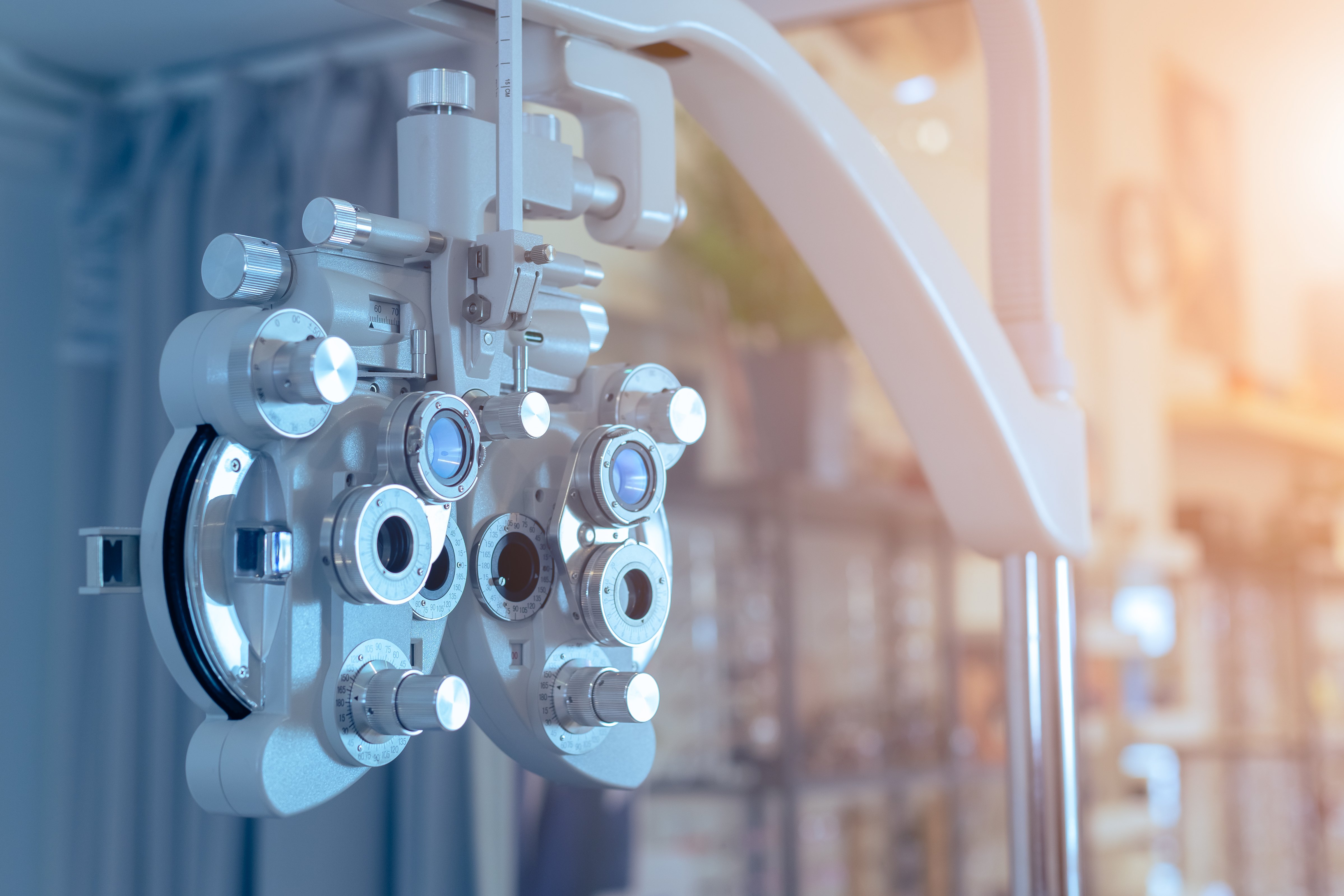
Eye Focusing, Eye Teaming, and Eye Movement Testing
To see a clear, single image, the eyes must effectively change focus, move and work in unison. An assessment of accommodation, ocular motility, and binocular vision determines how well your eyes focus, move, and work together. This testing will look for problems that keep eyes from focusing effectively or make using both eyes together difficult.
Eye Health Evaluation
A wide variety of microscopes, lenses, and digital technology will be used to assess the health of all the structures of the eye and the surrounding tissues. Dilating eye drops are often used to temporarily widen the pupil for better views of the structures inside the eye. In addition to measuring the pressure inside the eye, this is also part of the eye exam where our physicians or optometrists can detect otherwise unknown eye and systemic diseases.
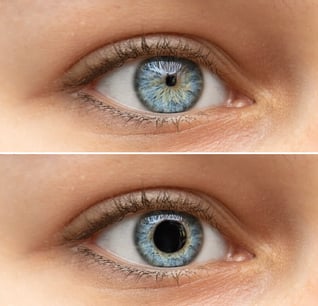
Additional Testing
Additional testing may be needed based on the results of the previous tests to confirm or rule out possible problems, clarify uncertain findings, or provide a more in-depth assessment.
After the examination, the doctor will assess and evaluate the results of the testing to determine a diagnosis and develop a treatment plan. He or she will discuss with you the nature of any visual or eye health problems found and explain available treatment options. In some cases, referral for consultation with, or treatment by, another one of our physicians, optometrists, or other health care providers may be suggested. If you have questions about any diagnosed eye or vision conditions, or treatment recommendations, do not hesitate to ask for additional information or explanation.
Pediatric Eye Exams
We have extensive experience diagnosing and treating eye problems in children. Over the past 51 years, we have examined thousands of patients, including children with common and rare eye conditions.
Some experts estimate that approximately 5 – 10 % of preschool-aged kids and 25% of school-aged children have vision problems. According to the American Optometric Association (AOA), all children should have their eyes examined at 6 months of age, at age 3, and again at the start of school. Young children without vision problems or risk factors for eye or vision problems should then continue to have their eyes examined annually or recommended thereafter throughout the school year.
The first visit to the pediatric ophthalmologist is a thorough evaluation that will take at least one and a half hours (your visit may take longer if your child needs specialized testing or has complex eye problems).
During a pediatric eye exam, we will test your child’s vision through several techniques that allow us to test babies, preverbal children, and children able to read the eye chart. We use matching games, letter recognition, and even pictures. Next, our pediatric physician will dilate both eyes with eyedrops (dilation takes an additional 30 to 45 minutes). This essential part of the exam will allow the doctor to look at the inside and back of the eyes and check the health of your child’s lens, retina, and optic nerve. We use state-of-the-art equipment during each exam. We check for nearsightedness (myopia), farsightedness (hyperopia), and astigmatism. Additional testing might be needed (see Annual Eye Exam below).
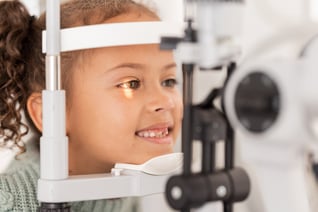
NOTE: Children with existing vision problems or risk factors should have their eyes examined more frequently.
Common risk factors for children’s vision problems include:
- premature birth
- developmental delays
- turned or crossed eyes
- family history of eye disease
- history of eye injury
- other physical illness or disease
If you are seeking pediatric eye examinations in the Houston area, please feel free to contact our practice. Our renowned pediatric ophthalmologists will perform a thorough eye exam to determine your child’s visual health. We offer a wide variety of pediatric eyewear, if necessary, at our optical shops.
Learn more about Pediatric Eye Exams.
Annual Eye Exams
Did you know an annual eye exam with one of our physicians or optometrists does not just determine if you need eyeglasses or contact lenses? Our physicians and optometrists also carefully look at all aspects of your eye health, which can help provide a clearer picture of your overall health. Annual eye exams go well beyond the goal of 20/20 vision and are particularly important for preventative eye health concerns. Your annual eye exam can detect early signs of systemic diseases like diabetes, hypertension, cholesterol, macular degeneration, thyroid issues, glaucoma, autoimmune conditions, and even certain cancers.
Only an ophthalmologist or optometrist can conduct an eye and vision examination. Our doctors have the specialized training necessary to make a definitive diagnosis and prescribe treatment.
According to the American Academy of Ophthalmology and American Optometric Association, an annual adult eye examination includes:
- Patient and family health history.
- Visual acuity measurement.
- Preliminary tests of visual function and eye health, including depth perception, color vision, peripheral (side) vision, and the response of the pupils to light.
- Assessment of refractive status to determine the presence of nearsightedness, farsightedness, or astigmatism.
- Evaluation of eye focusing, eye teaming, and eye movement abilities.
- Eye health examination.
- Supplemental testing.
- Additional tests as needed.
- Refraction (glasses prescription)
- Contact Lens Fitting (contact lens prescription)
Learn more about Comprehensive Eye Exams.
FAQs
- How often do I need to get an eye exam?
- An eye exam is recommended annually to help ensure the health of your eyes and the quality of your vision
- How is an annual eye examination different from a vision screening?
- Vision screening programs cannot substitute for professional vision care. Children or adults who pass a vision screening could still have eye health or vision problems. Annual eye examinations are truly the only effective way to confirm or rule out any eye disease or vision problems.
- Which insurance plans does Houston Eye Associates accept?
- Our doctors accept most major medical insurance plans and vision plans.
Our Promise
At Houston Eye Associates, we passionately believe in providing our patients with the highest quality care when they visit each of our clinics. We pledge to provide a lifetime of excellent, compassionate eye care and a positive patient experience to each of our patients to ensure confidence in Houston Eye Associates.
You and your eye health are important to us. Let us be the help you need when it comes to your eyesight and all your family’s eye care needs. Schedule your annual eye exam today at Houston’s “Best Place To Get Your Eyes Checked” by calling us at 713-668-6828 or by booking online.
Come SEE the Difference at Houston Eye Associates.
.jpeg)

